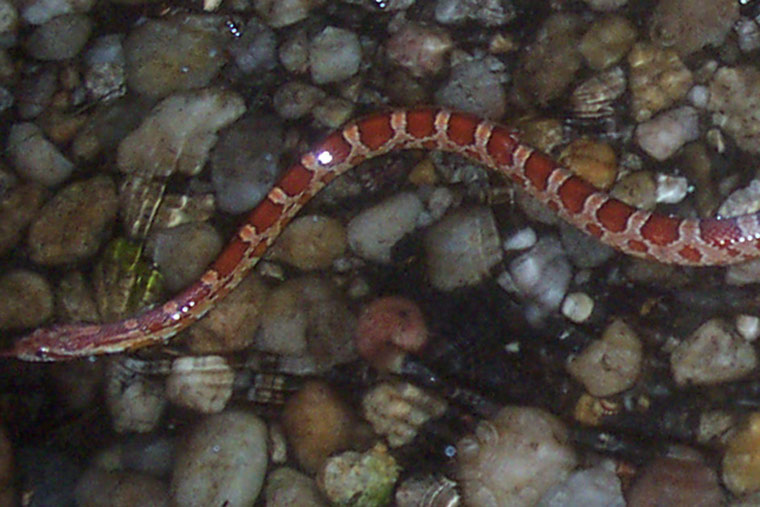-
info@aaanimalcontrol.com
Call us for help in your town
Humane Wildlife Education
How to Remove a Snake in a Swimming Pool
Need snake removal in your hometown? We service over 500 USA locations! Click here to hire us in your town and check prices- updated for year 2020.
The last thing you'd expect to find in your swimming pool is a wild animal, but this seems to be a very common occurrence in the United States, with bears, raccoons, lizards, snakes, and more all being found in residential pools.

Snakes are attracted to the water all year round. Many homeowners think that the snakes are attracted to the cool water in the heat of the summer only, but if you have a heated pool, the warmth could attract certain species of snake during the winter too.
You will want to get the snake out of the swimming pool as soon as possible, and this is even more so the case if the pump is running. Many pool technicians will tell you that they often come across dead snakes in the pump and suction areas, first slithering into the pool to take a refreshing and cooling dip, and soon getting sucked into the engineering of it all. Some will die as a result of starvation, some of long-term exposure to chlorine, some will drown. Any animal in your pool can put the workings of it in jeopardy, and when the animal is a long and slithering serpent, it won't take long before it ends up being somewhere it shouldn't.
For the most part, snakes are able to get into most pools with relative ease, but getting out again is often what poses the biggest problems. Although snakes can climb stairs and walls, it is much harder to get out of a pool.
To get the snake out, a net or pool skimmer can sometimes be used. If you don't have a net, or just don't have the experience to use a net, you could try simply using a pole. All you want to do is give the snake something to grip on to so that it can be lifted from the pool. Once placed by the poolside, most snakes will slither away speedily, more scared of you than you probably are of it.
If you'd rather not get within a few feet of the snake, which will usually be the case when using poles and nets, you could try overhanging a pole so that it touches the water, but still hangs out of the water too. Perhaps affix a pole to something firm on the ground, and then have the other end of the pole touching the water. The snake just needs to get to the pole in order to slither out, but you must make sure that everything is affixed firmly, otherwise you run the risk of the pole AND the snake falling right back in again.
You must remember that there are venomous snakes in the USA. If you're not trained or knowledgeable enough to distinguish between the different species, or when whether or not the snake is a venomous one, you shouldn't attempt to get this snake out by yourself. Give the professionals a call. They'll know exactly what to do, and they'll have the right tools to do it too.
For more information, you may want to click on one of these guides that I wrote:
How much does snake removal cost? - get the lowdown on prices.
How to get rid of snakes - my main snake removal info guide.
Example snake trapping photographs - get do-it-yourself ideas.
Snake job blog - learn from great examples of snake jobs I've done.


















